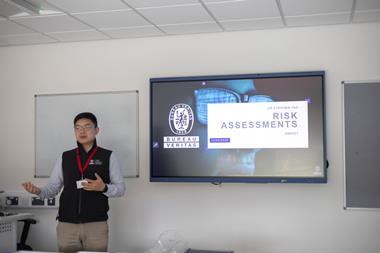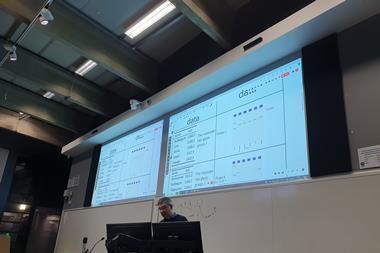Five tips to build your skills and see if it’s a career for you

Are you a scientist or science student who loves storytelling but is worried about leaving academia? Nicole Mlynaryk, scientific communications manager at the Salk Institute of Biological Sciences in the US, says structure-loving researchers tend to fear jumping into the free-for-all world of communications. ‘But the industry is starting to create more structure,’ she adds. ‘There are more internship programs, fellowships, and part-time opportunities.’
Here are some ways to get started.
Test the waters
Julie Kiefer, director of science communications at University of Utah Health, says it’s essential to get your feet wet. ‘The best way to see if it suits you is to try it. You might have your idea of what this job is like, but you won’t know until you dip your toes into that world,’ she says. You might find an internship opportunity at your university’s communications office. If you’re in the US, you can apply for the AAAS Mass Media Science & Engineering Fellowship, which will provide you with a 10-week opportunity to work in a newsroom. Fellows find employment in both journalism and communications.
Start where you are
Can’t do an internship right now? No problem! ‘The fortunate thing about science communication is that it doesn’t take much to get started … especially with the digital tools of today,’ says Lucky Tran, director of science communication and media relations at Columbia University Irving Medical Center. Share the latest research in your area on social media platforms. This will also help you connect with other researchers and build a community. Mlynaryk took night classes in science writing in graduate school through her institution’s extension studies programme – look for similar courses on your campus.
Write, write, write
Strong writing skills are coveted in the field. Pick up freelance writing work with science magazines. Working with world-class editors will push you to sharpen your description and interviewing skills, and teach you to write concisely for a more general-interest audience. You can also publish commentary pieces and essays on a blog. ‘It’s important to demonstrate the type of work you can do, even if you’re self-publishing it,’ says Kiefer.
Do your market research
Strike up friendships with the communicators at your institution or in your alumni networks and set up informational interviews with them. Setting up LinkedIn Alerts for communications jobs is also useful passive education, Mlynaryk says, because it allows you to see the types of roles that exist for science writers, their salary ranges, and the geographical hubs for these kinds of jobs. You can also join professional societies of writers that are active in your area.
Do what’s best for you
A regular job in science communication isn’t for everyone ‘It’s nice to take a step back and to think about … why did I get into science in the first place? What am I passionate about?’ says Tal Woliner, chief communications officer at the AAAS. You also need to consider your personal goals. One of the factors that prompted Mlynaryk to jump from academia to communications was the need for work-life balance: ‘I can impact the scientific industry more effectively if I embrace my natural interests and skill sets and optimal working conditions’.

















No comments yet